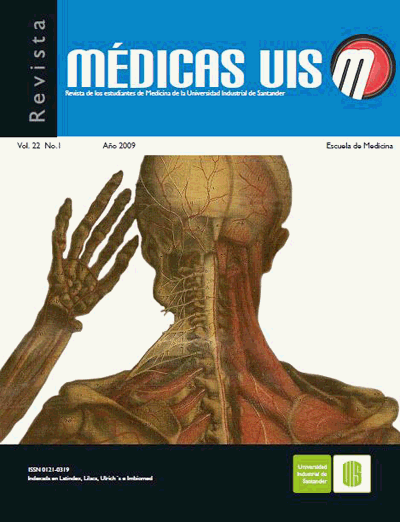Resumen
El óxido nítrico es un regulador multifuncional, fundamental para diversos procesos incluyendo la infamación, vasoregulación, señalización intra e intercelular, apoptosis y carcinogénesis. La falla en la síntesis y/o la pérdida de la biodisponibilidad de óxido nítrico es la principal característica de muchas enfermedades. La comprensión de los mecanismos subyacentes a los efectos del óxido nítrico a nivel celular y tisular, permitirá el desarrollo de nuevas terapias para balancear los efectos del óxido nítrico in vivo. El objetivo de esta revisión es mencionar los principales hallazgos en el campo de investigación relativo a este gas diatómico y su dinámica biológica.
Palabras clave: Antioxidante. Especies reactivas del nitrógeno. Especies reactivas del oxígeno. Óxido nítrico. Señalamiento celular.
Referencias
2.Albert R. Scale-free networks in cell biology. J Cell Sci. 2005;118:4947-57.
3.Ignarro LJ, Buga GM, Wood KS. Endothelium-derived relaxing factor produced and released from artery and vein is nitric oxide. Proc Natl Acad Sci USA 1987;84:9265-9.
4.Palmer RM, Ashton DS, Moncada S. Vascular endothelial cells synthesize nitric oxide from L-arginine. Nature 1988;333:664-6.
5.Myers PR, Minor RL Jr, Guerra R Jr. Vasorelaxant properties of the endothelium-derived relaxing factor more closely resemble S-nitrosocysteine than nitric oxide. Nature 1990;345:161-3.
6.Barinaga M. Is nitric oxide the “retrograde messenger”?. Science 1991;254:1296-7.
7.Hoffman M. A new role for gases: neuro transmission. Science 1991;252:1788.
8.Koshland DE. The molecule of the year. Science 1992;258: 1861.
9.Culotta E, Koshland DE. NO: new is good news. Science 1992; 258: 1862-5.
10.Bilban M, Haschemi A, Wegiel B et al. Heme oxygenase and carbon monoxide initiate home-ostatic signaling. J Mol Med 2008;86:267-79.
11.Li L, Moore PK. Putative biological roles of hydrogen sulfide in health and disease: a breath of not so fresh air? Trends Pharmacol Sci 2008;29:84-90.
12.Li L, Moore PK. An overview of the biological significance of endogenous gases: new roles for old molecules. Biochem Soc Trans 2007;35:1138-41.
13.Nitric oxide: biology and chemistry. Holanda: Excerpta Medica-Elsevier-Academic Press; 1997-[fecha de acceso 15 de octubre del 2008]. Disponible en: http://www.elsevier.com/wps/find/journaldescription.cws_home/622926/description#description
14.Shoja MM, Tubbs RS, Shokouhi G. The potential role of carbon dioxide in the neuroimmunoendocrine changes following cerebral ischemia. Life Sci 2008;83:381-7.
15.Durazo-Quiroz F, Pastelín-Hemández G, del Valle-Mondragón L. Nitric oxide in medicine]. Gac Med Mex 2007;143:401-14.
16.Ray A, Chakraborti A, Gulati K. Current trends in nitric oxide research. Cell Mol Biol (Noisy-le-grand) 2007;53:3-14
